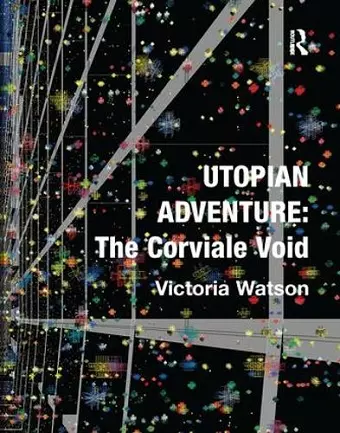Utopian Adventure: The Corviale Void
Format:Paperback
Publisher:Taylor & Francis Ltd
Published:19th Oct '16
Currently unavailable, our supplier has not provided us a restock date
This paperback is available in another edition too:
- Hardback£150.00(9781409409915)

This book is about contemporary issues in architecture and urbanism, taking the form of a project for The Corviale Void, a one kilometre long strip of urban space, immured in the notorious Corviale housing development in the Southwestern sector of Rome. Corviale is a bizarre object, single-minded in its idea, the history of Corviale can be traced to debates in Italian architecture culture of the 1960’s, including Aldo Rossi’s objection to urbanisation, as articulated in his books and projects. On the one hand the project for the Corviale Void begins with one of the original theorists of modern urbanisation and architecture, Giovanni Battista Piranesi, looking into his fascination with the insides of walls. On the other hand the project begins with a new material form, The Air Grid. Like the forms appearing in Piranesi’s etchings, Air Grid is made from a kind of hatching, but Air Grid is hatched out of colour vectors, literally drawn into the air. The human eye is easily mesmerised by the Air Grid, scanning back and forth it reads the colour form as animated, in some sense alive. At the same time as the Italian architects were engaged in those activities that would eventually give birth to the Corviale Void, the painter Yves Klein, was creating The Architecture of the Air. Klein’s work is of special interest to the project of the Corviale Void because of the important role of colour in the development of his thinking about architecture. By attending to Klein’s parallel inquiry Air Grid is brought into dialogue with the philosophy of Arthur Schopenhauer, who was one of the first thinkers to develop a physiological theory of colour. The important thing about Schopenhauer’s thinking is the careful way he looked at physiological phenomena, regarding them as directly informed by metaphysical powers; for Schopenhauer Architecture too is a physiological matter and hence metaphysical. The concluding proposal for the Corviale Void presents a metaphysical archite
'A flight into the poetics of gossamer, the metaphysics of optics, and the most imaginative reaches of architectural thought, Victoria Watson's book is indeed a utopian adventure, leading the reader on an exhilarating excursion into a project of late-modern Italian urbanism, on the wings of robot beetles.' Joan Ockman, Columbia University, USA ’What to do with unloved public housing projects is a perennial source of controversy and debate. Those assertive, post-War concrete giants prompt apoplexy throughout much of middle England, with dynamite and wrecking balls often the preferred solution. In the final chapter of a new book, architect and historian Victoria Watson proposes an extraordinary use for the defining feature of a grim Italian estate - fill it with millions of robot beetles.’ The Telegraph 'Watson’s adventure links the thinking of a series of artists, architects and philosophers in a fascinating, mind-bending trip. Side-stepping the usual debates over utopian mid-century architecture [...] her text opens questions about the role of the aesthetic and the monumental in the city, challenging materialist and economically rationalist ideas of city making.' LSE Review of Books
ISBN: 9781138254503
Dimensions: unknown
Weight: 240g
136 pages